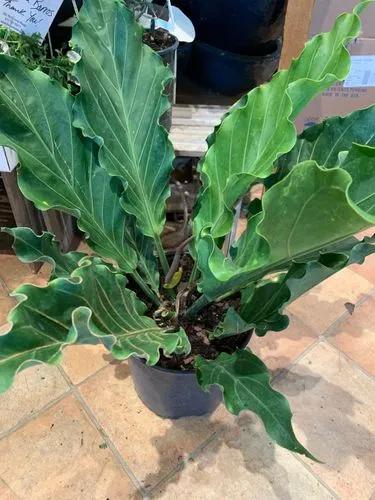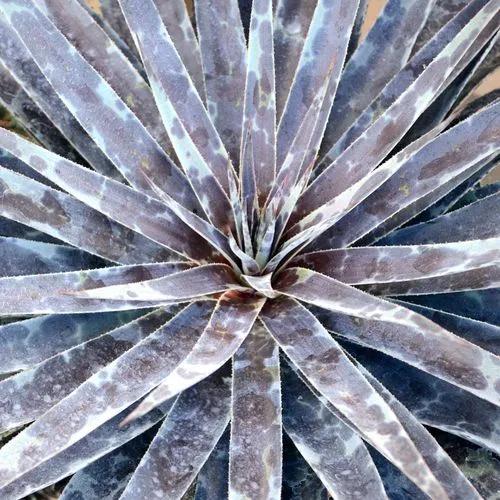Xanthosoma is not typically thought of as a houseplant. In tropical countries, they are farmed for their starchy tubers, and almost everywhere else they are the collectors' plants known as elephant ears and grown in botanical gardens and greenhouses. But with the increasing availability of rare plants, Xanthosoma is worth a long, hard look. These plants feature sometimes very large arrow-shaped leaves, as well as some of the most striking, elegant leaves in the plant kingdom. With their expanses of green, their graceful draping, and their lovely form, Xanthosoma is the essence of the rainforest.An herbaceous perennial, Xanthosoma sagittifolium has a corm or main underground stem in the form of a rhizome from which swollen secondary shoots, or cormels, sprout. The spadix (a spike of minute flowers) is cylindrical, with female flowers on the lower portion, male flowers on the upper portion and sterile flowers in the middle portion. The growth cycle lasts from 9 to 11 months: during the first six months the corms and leaves develop; in the last four months, the foliage remains stable and, when it begins to dry, the plants are ready for the cormels to be harvested.
Tania Care
Xanthosoma Sagittifolium



How to Care for the Plant

Water

Throughout the growing season, water and mist frequently. Many Xanthosoma will die back to tubers in the winter, but don't let the tuber completely dry out.

Fertilizer

To help establish your new Tahitian Giant, fertilize sparingly at least 6 inches away from the base, tri-annually with a slow time released product. Unfertilized they will tend to grow very slowly. Note: The heavy salts in cheaper fertilizers will damage the roots and possibly kill the plant.

Sunlight

Best outdoors if grown in zone 8b-11, find your zone here. This Tahitian Giant plant requires 70-85% sunlight. Depending on your location filtered sun is best. In the northern end of their grow zone Tahitian Giant plants should be brought indoors or protected during the winter months. The patio zone is 4b-11 which means the potted plant will flourish over the summer months in colder zones but must be brought inside before frost.

Soil

Tahitian Giants enjoy well drained but moist, rich organic mix. Remember try to stay away from wet, mucky or dry, sandy soils.

Temperature

Tahitian Giant plants can be grown in containers or outdoors as a remarkable landscape plant. Indoors plants thrive at temperatures between 55°- 80°F and in lower light conditions than other house plants.

Container

Tahitian Giant grow very well in patio and indoor containers. Allow enough room for growth generally a 10″ to a 20″ diameter, 10″ deep container will suffice to get started. Remember the looser the roots, the taller and healthier your plant will be. When the plant becomes root bound its growth will slow, at that point it is time for a larger pot.

Popularity

3,154 people already have this plant 321 people have added this plant to their wishlists
Discover more plants with the list below
Popular articles






